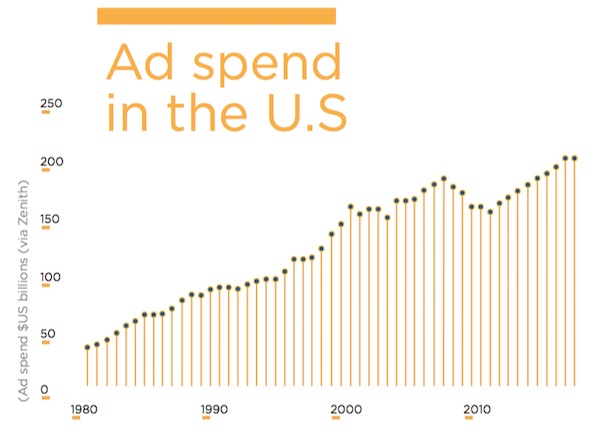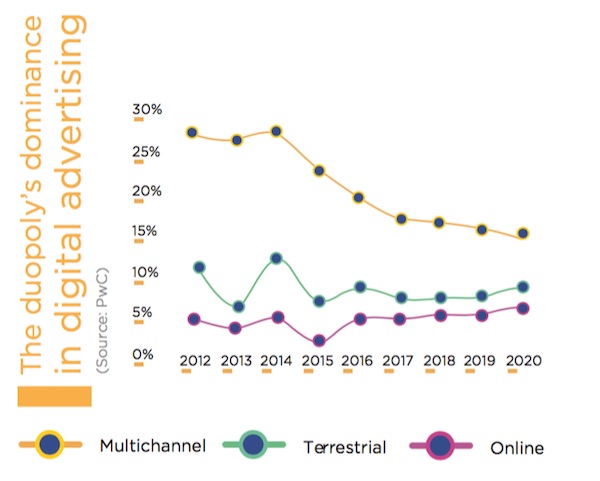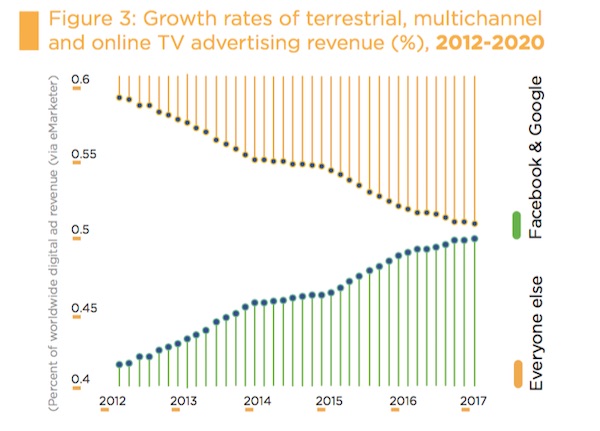Armed with technology, advertisers can spend less and still grow sales

For almost a century, ad spending has hovered around 1 to 1.5 percent of GDP, and this year will be no different, if the forecasts are right. Zenith Media, one of the most widely cited forecasters, projects that this year’s total ad spend will reach $197 billion in 2017, based on the belief that advertising’s share of the gross domestic product will remain constant.
But what if these forecasts are wrong?

As technology has improved, the ability to reach specific audiences has become more efficient and cheaper. Display ads are getting cheaper, and brands like Unilever and Procter & Gamble are showing it’s possible to slash ad budgets without seeing drops in sales, says media industry analyst Rebecca Lieb. Brands are getting choosier about how they spend digital ad dollars at a time when TV ad spend — which accounted for the bulk of total ad spend over the past half century — is beginning to decline.

Ad position: web_incontent_pos1
Experts predict the growth in digital spend will offset the decline in TV spend. But maintaining digital advertising’s current level of growth is a bit unsustainable, says Pivotal Research analyst Brian Wieser.
Ad spend usually grows 2 to 3 percentage points annually, but lately it’s grown about 5 percentage points per year. The majority of this growth comes from Google and Facebook, which reap more than half of all digital display and mobile ad dollars. A slowdown from either of these companies could end the precipitous growth in digital ad spend.

Ad position: web_incontent_pos2
If brands spend less on advertising, they’ll likely spend that money toward using consumer data to reach people through direct marketing tactics like targeted emails, Wieser says.
Should ad spend decline, marketers will spend more resources on analyzing data to figure out new ways of driving organic engagement, says Cheryl Huckabay, the head of brand media at ad agency The Richards Group. Attribution and measurement companies will become even more valuable as marketers try to understand the value of the customers they already have.
More in Marketing

In the marketing world, anime is following in the footsteps of gaming
As marketers look to take advantage of anime’s entry into the zeitgeist, they might be wise to observe the parallels between the evolution of anime as a marketing channel and the ways brands have learned to better leverage gaming in recent years.

With the introduction of video ads and e-commerce, Roblox looks to attain platform status
Roblox is expanding into more areas than just ads in 2024. Much like platforms such as Amazon and Facebook have transcended their origins to evolve from their origins as online marketplaces and social media channels, Roblox is in the midst of a transformation into a platform for all elements of users’ virtual lives.

PepsiCo wants to remain a ‘driver of culture’ as it turns to influencers and activations amid rebrand
The soda-maker says it can translate cultural relevance into sales volume.
Ad position: web_bfu